5 Powerful Tips To Meditate Like A Pro
Embarking on a meditation journey can often feel like navigating through a maze, with myriad paths yet no clear direction.
However, mastering the art of meditation is not as elusive as it might seem. With the right tips to meditate like a pro, you can transform this journey from one of confusion to clarity, enhancing both your mental and physical well-being.
Meditation is not merely an act but an art that requires technique, diligence, and, most importantly, consistency.
In this post, we will explore five crucial tips to meditate properly that will not only help you understand what are 5 ways to meditate but also guide you on how to prepare for meditation effectively.
Busy? Save this pin for later.
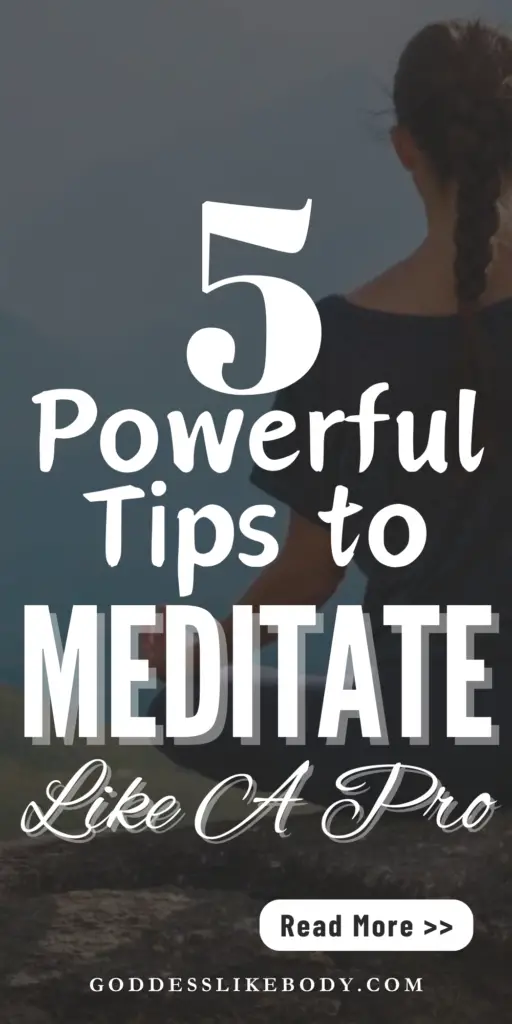
1. Choose the Right Time of Day
Choosing the right time of day to meditate can significantly enhance your practice, making it easier to maintain consistency and deepen your focus.
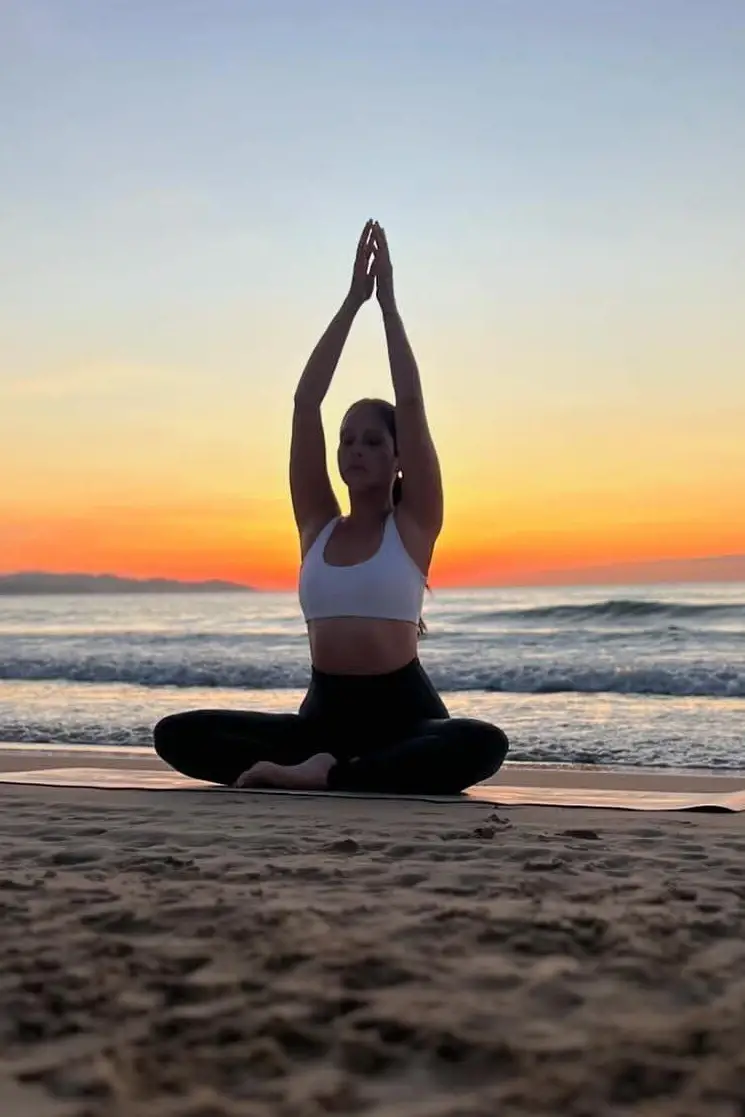
Many find the morning to be an ideal time due to fewer distractions, setting a positive tone for the day ahead.
Starting your day with meditation can ensure it becomes a non-negotiable part of your routine, much like brushing your teeth.
However, not everyone’s schedule allows for a morning session. It’s important to analyze your daily schedule and identify pockets of time that could be dedicated to meditation. This might be during a midday break or in the evening as a method to unwind.
Experimenting with different times can also be beneficial. Try meditating at various points throughout the day to see what works best for you.
Once you find a time that suits you, try to stick to this optimal meditation time consistently. Consistency is crucial as it helps to establish meditation as a habit.
If your chosen time is in the morning, make it a part of your waking ritual.
If evenings work better, use it as a tool to release the stress of the day. Remember, the best time to meditate is when you can do it regularly and without too much adjustment to your existing routine.
Being flexible yet committed will help you build a lasting meditation practice.
2. Create a Pre-Meditation Ritual
Creating a pre-meditation ritual is a powerful way to enhance your meditation practice.
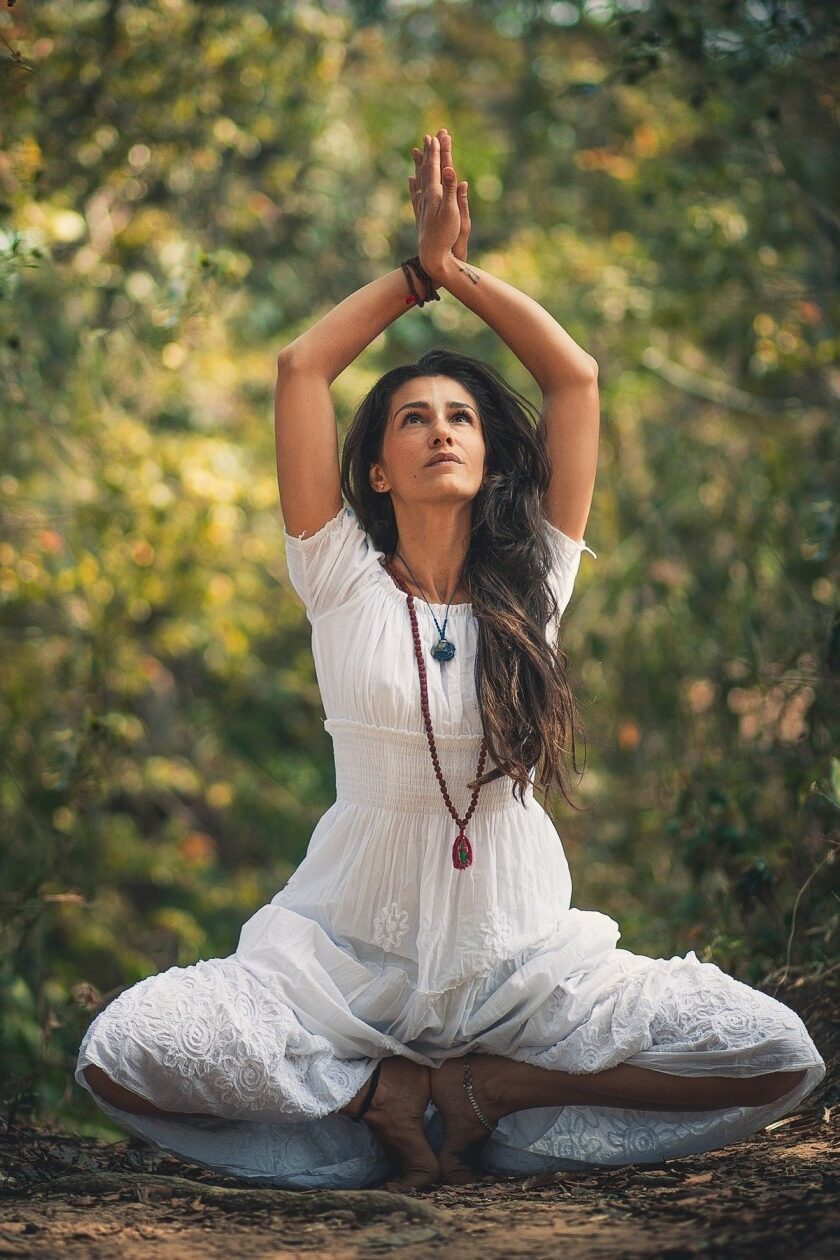
This ritual helps you transition from the hustle of daily life into a state of calm readiness for meditation.
It’s about preparing both your mind and your environment, setting the stage for a focused and effective session.
Importance of Preparation
The importance of preparation cannot be overstressed. Just as athletes warm up before a game, you need to prepare your mind and body for meditation.
This might involve sitting in a half-lotus position and taking a few deep breaths to center yourself.
Consider expressing gratitude or setting a simple goal for your session, such as increasing the duration of your sit or deepening your breath awareness.
These steps signal to your brain that it’s time to shift gears from everyday concerns to a more introspective focus.
Designing Your Personal Ritual
Your personal ritual might include arranging a dedicated space in your home where you can meditate without interruptions.
This could be as simple as a quiet corner with a meditation cushion. You might also consider incorporating elements that engage your senses, such as lighting incense or playing soft, ambient music.
These actions help create a physical environment that supports your mental transition into meditation mode.
Transitioning into Meditation Mode
As you begin your meditation, allow yourself to take deep, full breaths, feeling the air move in and out of your lungs.
This not only helps to relax your body but also aids in drawing your focus inward. Remind yourself of your meditation goals or the reasons you are practicing, whether it’s for stress reduction, personal growth, or spiritual development.
Engaging in these mindful practices helps build a bridge from the active part of your day into the reflective, quiet space needed for effective meditation.
3. Use Props for Comfort
When you meditate, comfort is key to maintaining focus and achieving deep relaxation. Meditation props like cushions, chairs, and mats are essential as they support proper posture and reduce physical discomfort.
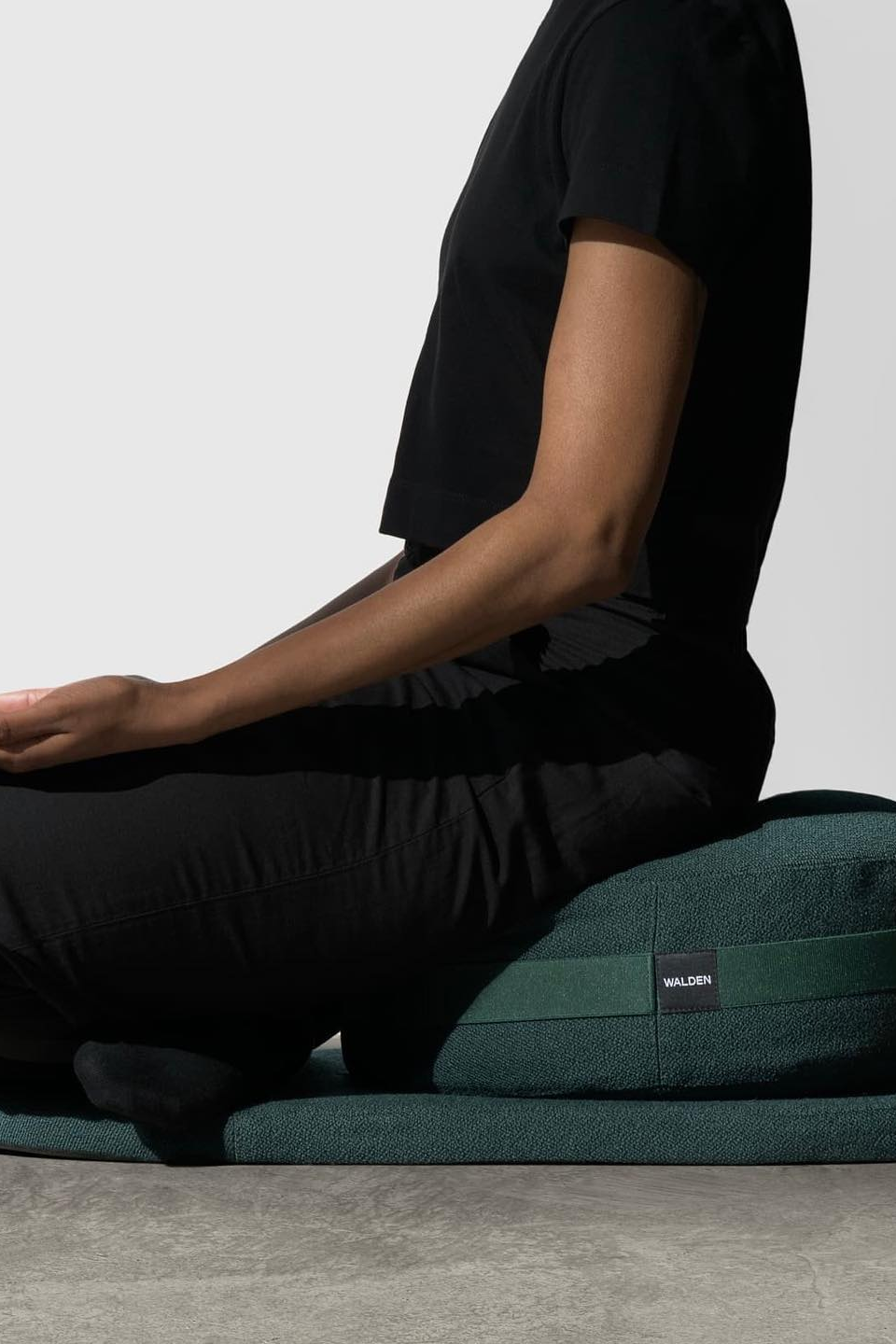
Meditation cushions are particularly beneficial as they elevate your hips, aligning your spine and allowing your legs to relax. This positioning prevents strain on your back and legs, making it easier to sit for longer periods.
Meditation chairs offer back support and are ideal if you find sitting on the floor challenging. They help maintain an erect posture, which is crucial for effective meditation.
For those who prefer a softer support, bolsters provide a wider and more flexible cushioning, perfect for various sitting or lying positions.
These props aren’t just for meditation; they can also enhance yoga practices or simply serve as a comfortable seating option.
Adapting your meditation props to suit different styles is straightforward. If you engage in Yoga Nidra, a deeply relaxing practice, using a bolster or mat can enhance your comfort as you lie down.
For dynamic meditation styles, sturdy cushions or benches can provide the necessary support allowing you to focus on your practice without distraction.
4. Practice Non-Judgmental Awareness
This approach involves observing your thoughts, feelings, and sensations without attaching labels or making snap judgments.

By doing so, you cultivate a deeper connection with your inner self and enhance your meditation experience.
Understanding Non-Judgmental Mindset
A non-judgmental mindset starts with recognizing that many of our immediate assessments are incomplete or inaccurate.
These quick judgments can lead to negativity and stress. Instead, try viewing your thoughts and experiences with ‘fresh eyes,’ appreciating them without preconceived notions.
This mindset is not about knowing everything but about being open to new wisdom and understanding.
Techniques for Cultivating Awareness
To develop this mindset, practice observing your thoughts and emotions as they are, without trying to change them.
A useful technique is to sit quietly and notice whatever comes up—be it a physical discomfort, an emotion, or a thought.
Acknowledge these without reacting or trying to fix them. Over time, this practice will enable you to maintain peace and presence, regardless of the circumstances.
Applying Non-Judgment in Daily Life
Applying non-judgmental awareness in daily life means being kind and patient with yourself and others. It involves letting go of harsh self-criticism and extending empathy and compassion to everyone you encounter.
By doing so, you become a source of calm and kindness in a hectic world. This practice not only enriches your meditation but also enhances your interactions and relationships in everyday life.
Non-judgmental awareness allows you to experience life fully, without the burden of unnecessary judgments, opening up a path to true mindfulness and serenity.
5. Join a Meditation Community
Joining a meditation community can significantly enhance your practice by providing a supportive environment and a sense of camaraderie.
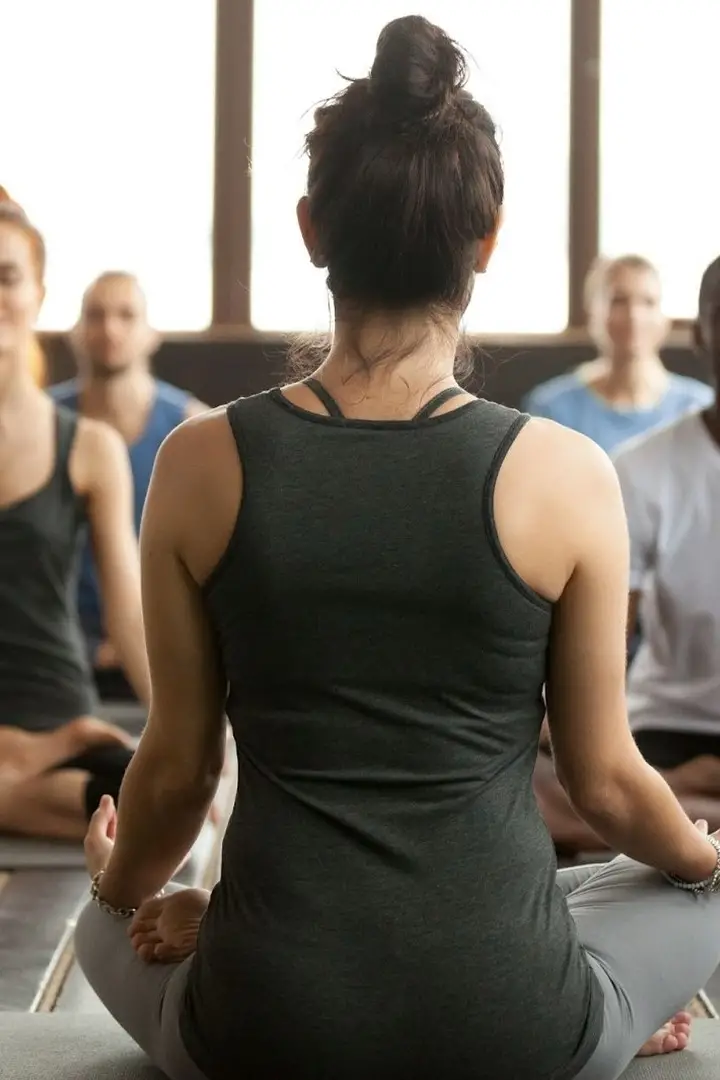
Whether you’re looking to deepen your practice or find a consistent routine, the collective energy of a group can be incredibly motivating.
Benefits of Group Meditation
Group meditation offers unique advantages, such as the ability to sync up with others, which can lead to a deeper and more fulfilling meditation experience.
Studies have shown that group therapy incorporating mindfulness is as effective as individual cognitive-behavioral therapy, highlighting the power of collective practice.
Additionally, meditating with others can help synchronize brainwaves, enhancing the overall experience.
The shared commitment to meditation within a group fosters a supportive network, reduces feelings of isolation, and can even improve your consistency.
Finding Local or Online Meditation Groups
Finding the right meditation group can be a game-changer. With the rise of digital platforms, you have the flexibility to join online groups that meet via video conferencing, allowing you to connect with practitioners from around the world.
Local groups can often be found in yoga studios, community centers, or through meditation apps. These groups provide diverse perspectives and approaches, enriching your practice further.
Whether you choose a local or an online group, the key is to find a community that aligns with your meditation goals and schedule.
Balancing Solo and Group Practice
While group meditation is beneficial, balancing it with solo practice is crucial. Solo meditation allows you to delve deeper into personal exploration and cater to your individual needs.
Meanwhile, group sessions can offer support, motivation, and a sense of belonging. Striking the right balance between these practices can lead to a more robust and resilient meditation routine, helping you to maintain focus and motivation over time.
Conclusion
These strategies, meticulously designed for both new and seasoned practitioners, serve as the foundation for not only transforming meditation from a sporadic activity into a robust habit but also for embedding mindfulness into the fabric of daily life.
Reflecting on the insights shared, the article reinforces the power of meditation to transform lives by suggesting a harmonious blend of consistency, the right environment, and community support.
Understanding these elements highlights the broader implications of a dedicated meditation practice, from personal growth and stress reduction to fostering a connected and compassionate global community.



